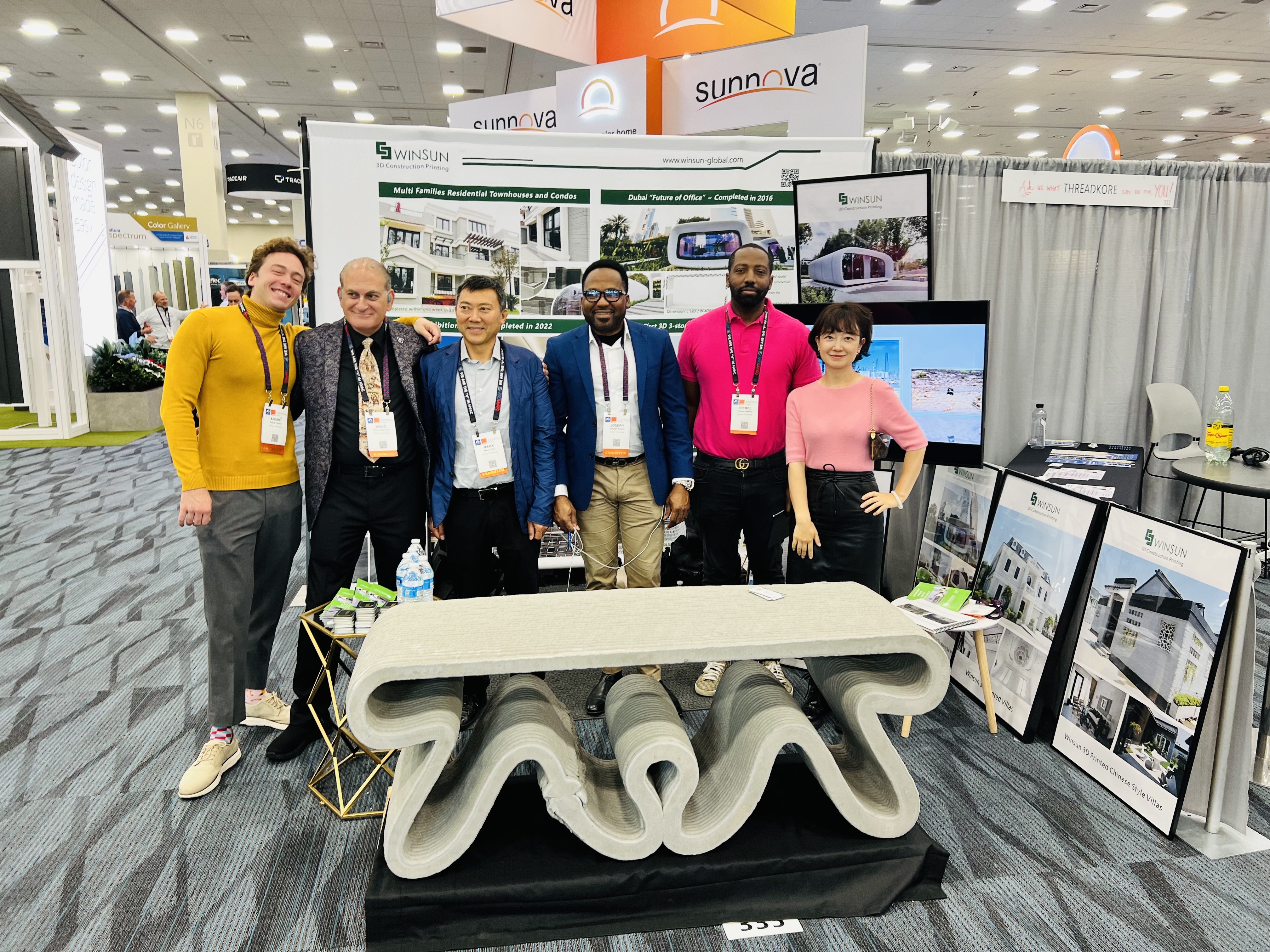【Randy International Think Tank】Demystified! What's so amazing about 3D printed isolation wards? Randi Platform Enterprise's Artifact to Fight the Epidemic
In the battle against the new coronavirus, timely isolation has become the top priority for epidemic prevention and control. Adequate isolation wards can not only concentrate and isolate patients diagnosed with infection and suspected patients, effectively prevent the spread of the epidemic, but also provide patients with a more professional and comfortable treatment environment, which will help their early recovery. It can be said that sufficient and timely isolation of wards will fight for more precious time and space for fighting the epidemic, thus saving more lives.
During the epidemic, Randi International think tank platform company Yingchuang Construction Technology Co., Ltd. donated 15 3D printed isolation wards independently developed by its independent research and development to the People's Hospital of Xianning City Center, Hubei Province, in the severely affected area, which solved the problems for frontline medical workers and patients Anxious. On February 12, 15 sets of isolation wards printed in one day came to the people of Hubei in the most sincere and simple way. At the same time, Yingchuang's technology research and development team is still racing against time to develop a series of 3D printed building products to fight against new crown pneumonia, such as white angel lounges, highway epidemic prevention posts, etc., and will donate to hospitals and places in need.
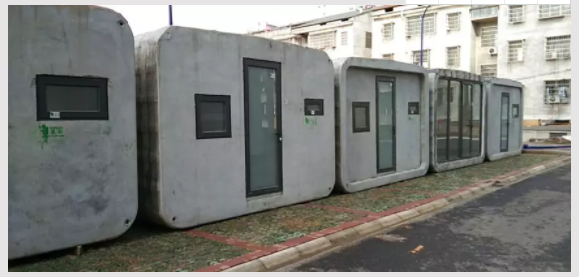
The picture shows 15 3D printed isolation wards donated by Landi International think tank platform enterprise Yingchuang Construction Technology Co., Ltd. to Xianning Central People's Hospital
1. "Ecological toilet": Avoid the transmission of new crown virus through feces
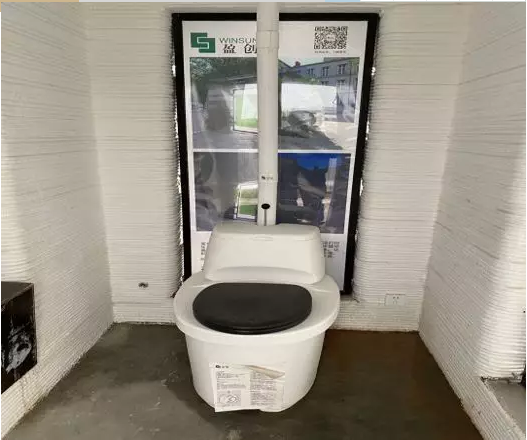
The picture shows the ecological toilet equipped with a 3D printed isolation ward
On February 13, according to the Ministry of Science and Technology, Academician Zhong Nanshan and Academician Li Lanjuan's team isolated a new type of coronavirus from stool samples of patients with neocoronary pneumonia. This finding suggests that feces may be a new route of transmission of neocoronavirus. Therefore, proper disposal of the feces of infected persons is essential. How will 3D printed isolation wards treat patient feces?
In this regard, Ma Yihe said that each 3D printed isolation ward is carefully equipped with an "ecological toilet". The toilet is designed to separate wet and dry stools automatically without the need for water flushing. The "ecological toilet" is not connected to the outside world and will not be discharged into the sewer, so it will not pollute the outside environment. The feces of patients will be recovered 100%, and organic biological bacteria will be used for centralized decomposition and treatment, which is very suitable for the isolation needs of infected patients.
2. "Turn waste into treasure": two to three times more intense than traditional houses
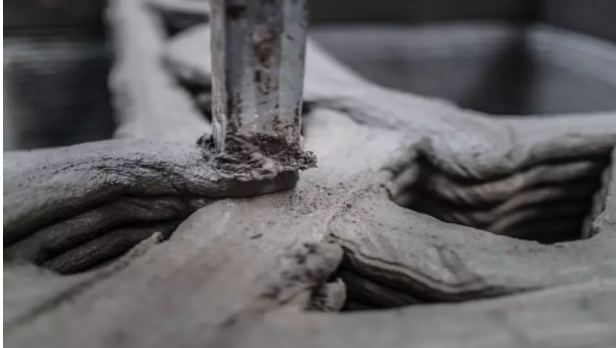
The picture shows a 3D printed building material processed from industrial solid waste and urban demolition of construction solid waste
According to Ma Yihe, donation of 15 3D printed isolation wards in Xianning Central People's Hospital was completed in one day. According to the production capacity of all the factories in Yingchuang, up to hundreds of 3D cottages can be printed in a day. So fast has broken people's imagination, compared with traditional buildings, is 3D printed buildings really safe and reliable?
The materials used for 3D printed buildings are not traditional sandstone cement, but some so-called "garbage", such as industrial solid waste and construction solid waste for urban demolition. After the separation and adhesion of impurities through Yingchuang's patented technology, the waste can be turned into a treasure. The strength of this type of building material is two to three times higher than that of traditional reinforced concrete houses. Ma Yihe said that 3D printed houses are not only strong, airtight, but also very earthquake-resistant. The 3D printed houses currently used to isolate wards can also be used as emergency shelters in the event of future earthquakes and other disasters. Therefore, the 3D printed house used as an isolation ward is very strong and reliable.
3. "Change on demand": sustainable use and extensive use scenarios
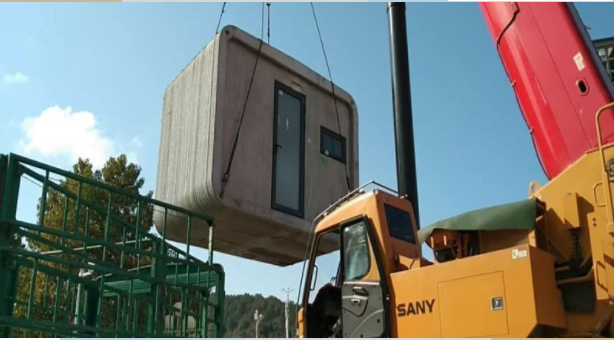
The picture shows the 3D printing isolation ward hoisting process
The 3D printed isolation ward has undoubtedly played an important role in solving the "emergency" in the epidemic situation, but where do these buildings go after the epidemic is over? Will the speed and efficiency of 3D printed buildings cause waste of new space resources and subsequent demolition and reconstruction problems?
In this regard, Ma Yihe explained to the staff of Randi International think tank that 3D printed small buildings can be flexibly moved because no foundation is needed. The 15 isolation wards sent to Xianning City were hoisted and transported by cranes and trucks. After the epidemic was over, they could be transported to other places where needed. In addition, all 3D printed buildings can be “rebuilt” and broken and reassembled, and their building materials can be recycled and used sustainably.
In addition, the advantages of 3D printed buildings in terms of ecological environment protection, flexibility and personalization make them have a wide range of application scenarios. Not only isolation wards, homestays, art cabins, public toilets, bus stations, landscape sculptures, etc. can be easily implemented.
During the interview, Ma Yihe said that the fight against the epidemic was a common battle for all Chinese. Yingchuang will spare no effort to devote wholeheartedly with the people of the whole country, and make every effort to donate 3D printing products to the places and hospitals in need, and give back to the society with love and dedication. Randi International Think Tank will continue to use the platform's resource advantages to tap, cultivate, and promote outstanding technology companies under the new globalization and the fourth industrial revolution, and contribute scientific and technological strength to fight the new coronavirus.





